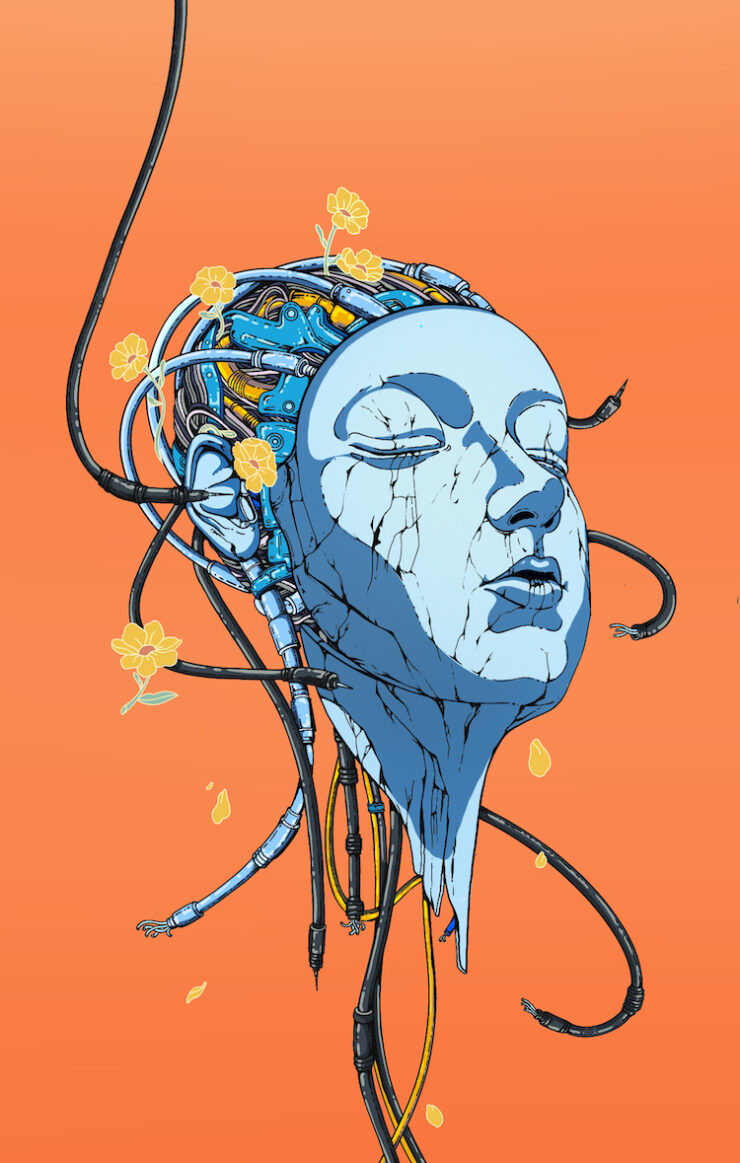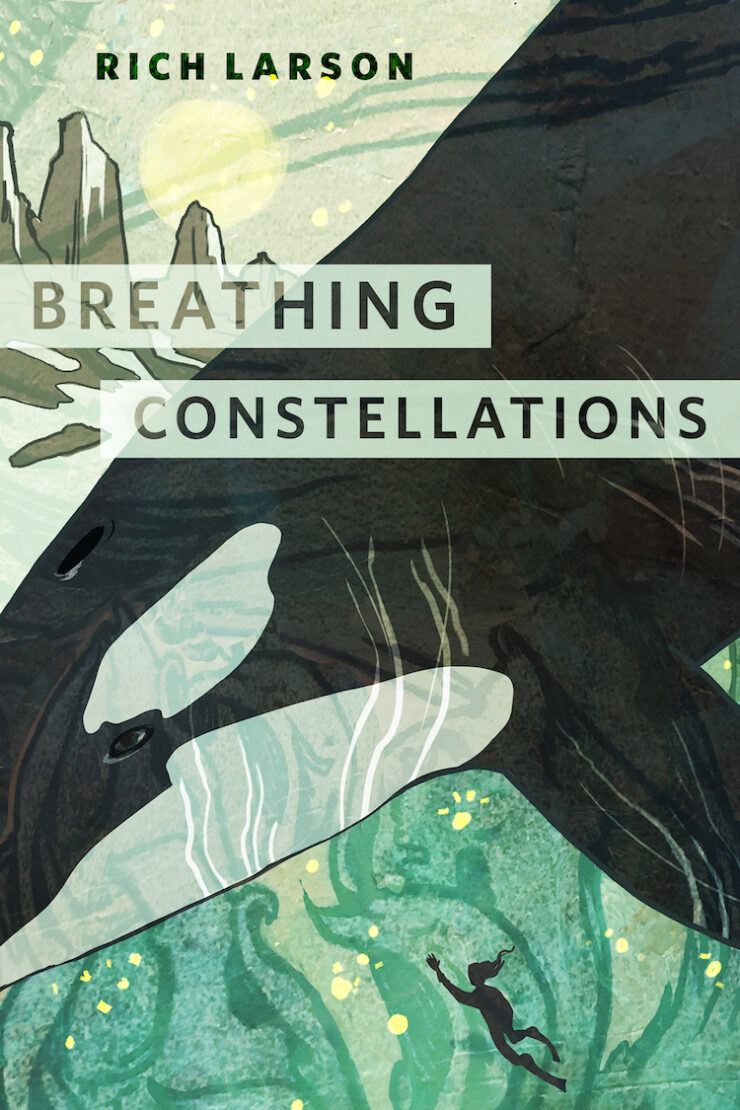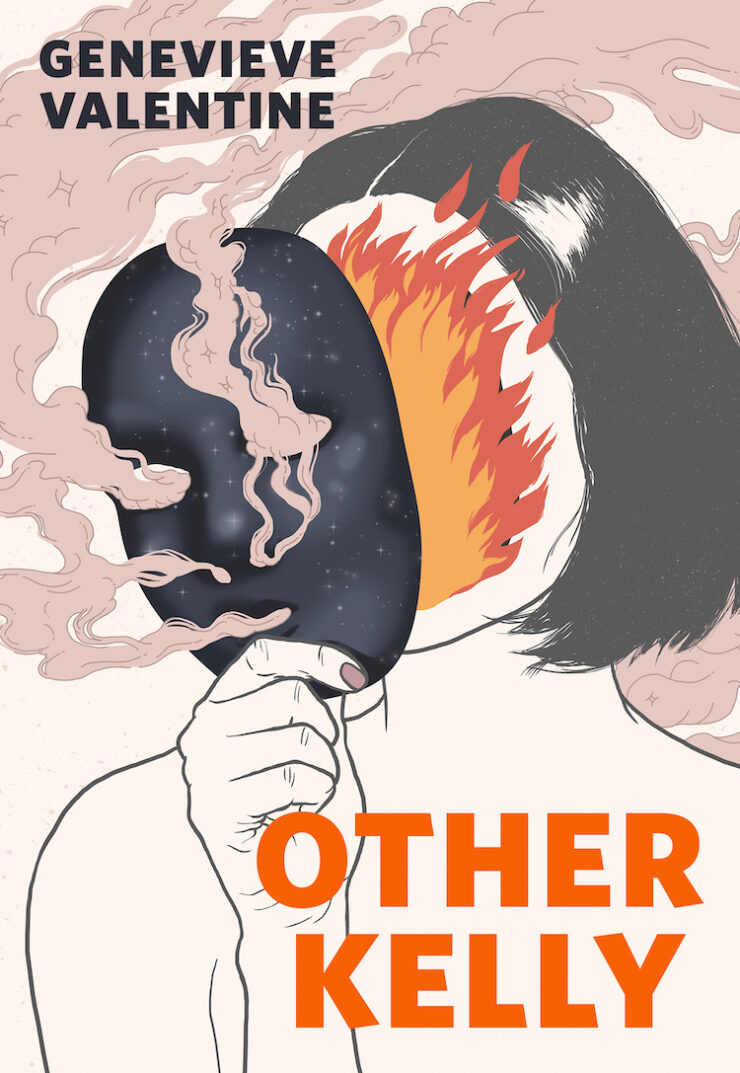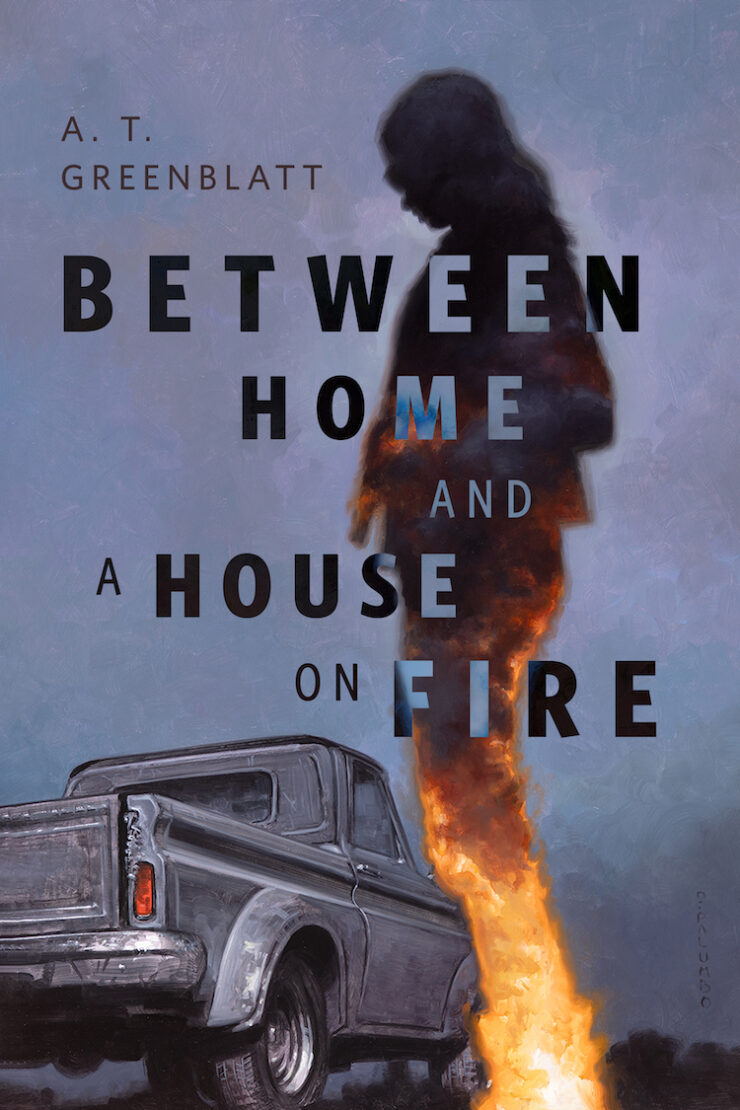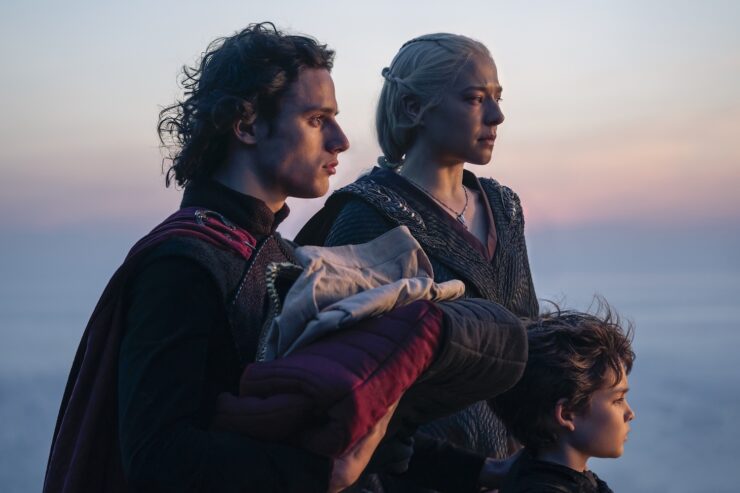After nearly two long years, House of the Dragon, HBO’s prequel to Game of Thrones, is finally back—and back with a vengeance. Vengeance is, of course, the theme of the second season’s inaugural episode (and the show itself), and it’s time to get into all the unsettling and tragic twists and turns of this bloody dynastic struggle.
If you’re new to my coverage of HotD, these weekly articles are a little bit of everything—part review, part recap, and mostly an exploration of the ways in which the show adapts its source material: Fire & Blood, George R.R. Martin’s 2018 history of the Targaryen dynasty. (Note: There will be spoilers for the episode from this point on.)
The Title
Episode one is entitled “A Son for a Son.” This is obviously in reference to the Grand Guignol murder of young Prince Jaehaerys, the son and heir of Aegon Targaryen and his sister-wife Helaena, which we will talk about, in depth, below. It is also the name of the fourteenth chapter in Fire & Blood (and the second chapter in the section that Gyldayn names “The Dying of the Dragons,” his cacophemism for the Dance of the Dragons). That chapter covers the deaths of both Lucerys and Jaehaerys and, in that way, the finale of season 1 and the premiere of season 2 are of a piece, mirrors of one another—the two irrevocable inciting incidents that make war inevitable.
Unraveling the New Opening Credits
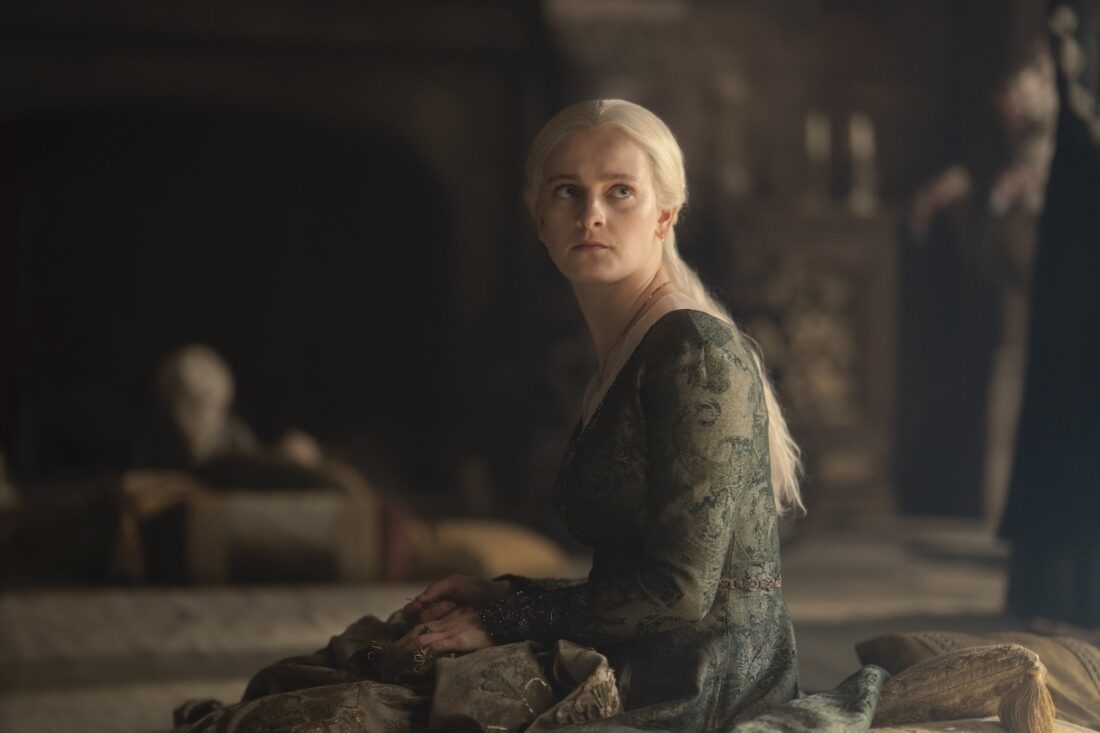
I had hoped, after the somewhat uninspired choice to reuse Ramin Djawadi’s iconic theme from Game of Thrones, that HotD would give us a new theme song in season 2—possibly a rearrangement. Alas, we still have the original. But in brighter news, the second season has updated the first season’s excellent titles, implying that every season will have a unique, thematically appropriate opening.
The first season titles took their inspiration from Viserys Targaryen’s model of the doomed city of Old Valyria. As the camera moved through the model, blood flowed between game piece dials, giving us the history of the Targaryen bloodline. In similar fashion, these new titles show a Bayeux Tapestry-style series of banners being embroidered while being simultaneously stained with blood.
I’m fairly certain we see the following tableaux:
- A panel depicting Valyrian blood magic including a figure (with the silver-gold hair native to Valyria) kneeling in supplication before a human-headed dragon, fiery wings bursting from its back. It potentially depicts the creation of the dragons themselves. Septon Barth, one of the scholars often cited in Fire & Blood, theorizes that dragons were once mundane wyverns that had been bred and ensorceled to breathe fire through Valyrian intervention. We see a blood-letting knife (possibly Aegon’s fateful dagger) and a row of black candles which may represent the glass candles—obsidian artifacts, imported from Valyria and said to burn like candles under the care of sorcerers who used them to communicate across long distances.
- A panel depicting a figure who might be Daenys the Dreamer cradling a dead or sleeping relative in her arms while on dragonback. Daenys is the prophetic Targaryen ancestor who moved the clan to Dragonstone, having foretold the Doom of Valyria a century before it occurred. Her visions are what ensured that the Targaryens were the only of the great Valyrian Dragonlords to survive the Doom. She is also the first of the Targaryens to have prophetic visions, or “dragon dreams” as they are often called. Viserys I believed he had them, as did Rhaegar and Daenerys. Given the importance of dragon dreams to HotD specifically, it makes sense that Daenys would be singled out as the original Targaryen ancestor of note.
- A panel depicting the Doom of Valyria—Martin’s analog for the fall of Rome or the sinking of Atlantis. Here, it’s shown as a fiery apocalypse where all fourteen of the Valyrian peninsula’s active volcanoes erupted at once, turning Valyria into a cursed ruin inhabited by monsters and demons. The somewhat Mayan design of Valyria has remained consistent with Viserys I’s model.
- Panels depicting Aegon the Conqueror and his sisters flying from Dragonstone to the mainland of Westeros to conquer the Seven Kingdoms. The first Targaryen king and his queens are depicted riding their massive dragons, Balerion, Meraxes, and Vhagar (who is the only one of these original dragons that survives into the timeline of the series). We also get panels depicting important moments from the conquest—the burning of Harrenhal and the surrender of Torrhen Stark, referred to as “the King who Knelt.” Torrhen is referenced at the start of this episode and this is a season where Harrenhal will be of key importance, so this provides some solid foregrounding of two pertinent episodes from the older war.
- A panel references the building of the Red Keep and the death of Maegor the Cruel, Aegon I’s son and the third Targaryen king of Westeros. Maegor built the Red Keep (and all its secrets), kidnapped noble women to be his wives, antagonized the church, had loyal subjects murdered, and finally died, impaled on the Iron Throne. Maegor is the enduring poster boy for all bad (read: congenitally insane) Targaryens. He is the model for Aerys II (the Mad King) and Joffrey. According to Archmaester Gyldayn (the in-world writer of Fire & Blood) Rhaenyra will come to be known by the cruel sobriquet “Maegor with Teats.” Even in Gyldayn’s account this feels somewhat undeserved and, of course, HotD is going out of its way to humanize and complicate all of its characters so I suspect that the title, if it is used at all, will serve to make a point about the biased cruelty of history.
- Below the image of Maegor is a section of tapestry depicting the ascendant King Jaehaerys I and his sister-wife, Good Queen Alysanne. History remembers them as inverse of Maegor: wise and benevolent Targaryens whose Valyrian blood (and the incestuous practices they employed to keep that blood in sufficient concentration) makes them exceptional rather than freakish. Jaehaerys and Alysanne’s famous trip to the Wall and their support of the Night’s Watch are also mentioned in the opening of this episode. Gyldayn’s account complicates the narrative of Jaehaerys, pointing out that, while his reign may have been peaceful, he was a terrible father and he left no heir as a result of his bad stewardship of his children.
- This brings us to a panel depicting the Great Council of 101 AC, where the elderly Jaehaerys I names his grandnephew Viserys as his heir, spurning his grandniece Rhaenys, who has the better claim. This served as the opening scene of season 1, and the inciting incident of the succession crisis that looms over the entire show.
- The last three panels all depict moments from the show itself, and I would expect these to update as we move through the season, much as the first season updated its bloodline as new characters were born. The events include Rhaenyra’s wedding to Laenor Velaryon which, in the show, replaces Viserys’ wedding anniversary dinner as the moment when the Black and Green factions are born. Note that, in the tapestry, there is already false memory at play: Rhaenyra’s wedding dress, in the show, is largely white but the moment captured in the tapestry shows her wearing a black dress. Much like Fire & Blood’s central conceit of being an unreliable history compiled from various biased sources, the show itself is rewriting the moment to suit later factions, with black and green dresses already in place. The titles also include an unfinished panel that shows images of Aegon II and Rhaenyra at their separate coronations. They end on the death of Lucerys Velaryon, the tragic finale of last season where Rhaenyra’s second son and his dragon, Arrax, are killed—accidentally, it turns out—by her nephew Aemond Targaryen and his dragon, Vhagar.
This whole tapestry motif, in addition to referencing the importance of tapestries as a record of Westerosi history, is likely a reference to Helaena Targaryen (Phia Saban) who, in her Cassandra-esque prophecies last year was obsessed with spiders and weaving. With these new titles in place, it’s probably no coincidence that this first episode features her so heavily.
The Stark Conspiracy
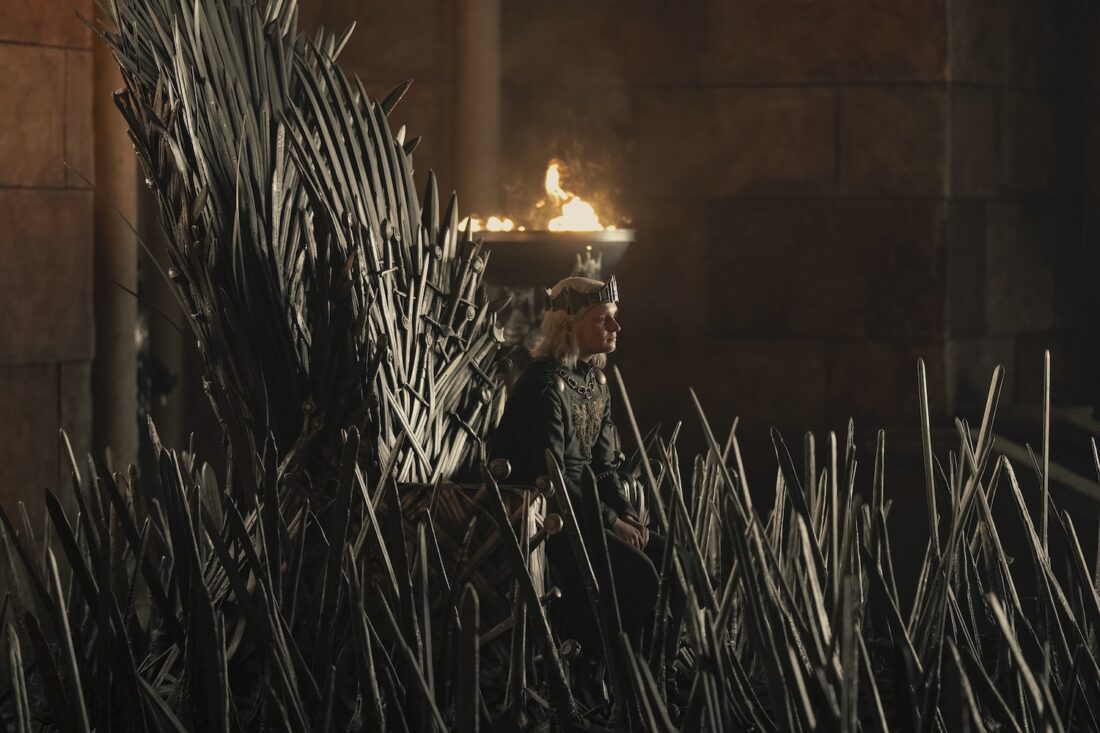
We have an interesting opening right off the bat. HotD knows how to pull some of the most effective nostalgia strings on TV, and opening with the Stark theme was an awesome choice. We’re given our first look at Cregan Stark (Tom Taylor), the young lord of Winterfell and Warden of the North in this era, as well as getting some information on the levies that House Stark pays to the Night’s Watch.
It’s also a depiction where the show either risks disappointing fans of the books or possibly sets up for something later in the season. In the books, much is made of Jacaerys Velaryon’s trip North, including rumors of a relationship/secret marriage with Cregan’s bastard sister, Sara Snow, and a secret stash of dragon’s eggs left at Winterfell. The possibility is much theorized about, in part because it lends credence to theories about the Song of Ice and Fire-era Winterfell containing the unhatched eggs. Even if the eggs and Sara Snow are the fabrication of Mushroom—the court fool who serves as Fire & Blood’s most licentious primary source—the books also give us “the Pact of Ice and Fire” wherein a Stark and Targaryen descendent will marry. Seeing as this does not come to pass officially, many book-readers theorize that the pact was fulfilled in secret by Rhaegar Targaryen and Lyanna Stark, resulting in the still-unrevealed-in-the-books circumstances of Jon Snow’s birth.
The show seems to have eschewed all of this as there isn’t much time this season for Jace (Harry Collett) to make a second journey. We do get an invocation of the White Walkers, specifically with regards to the momentous visit of King Jaehaerys and Queen Alysanne. Alysanne, especially, is an important figure in the North, having expanded the lands governed by the Night’s Watch and paid for the refurbishment of Snowgate (thereafter named Queensgate), one of the castles along the wall. This is another important link between the Targaryens and Starks long theorized to be pertinent to the books. In addition to establishing a Targaryen interest in keeping the Wall well defended (potentially because of their knowledge of Aegon’s dream and the Song of Ice and Fire), it also clues readers into the fact that dragons are loath to fly beyond the Wall, reminding us of the elemental opposition of dragons and White Walkers.
Blood and Cheese
Watching folks adapt A Song of Ice and Fire is always a fascinating process. The original show famously added more sex and on-screen sexual assault into the narrative to the understandable dismay of most viewers. It cut down on some of the more fantastical elements and often softened the violence of the novels—Tyrion keeping his nose on the show may have been about makeup time and budgeting concerns but it also somewhat blunted Martin’s perpetual interest in the ongoing horrors of war and the true permanent scars, both physical and mental, that it leaves. There are also some things that you simply can’t show on television. This is why it is so fascinating to see how the show has altered the death of Prince Jaehaerys.
Archmaester Gyldayn reports that the murderous Gold Cloak (in the book he is a disgraced former member of the City Watch) and the ratcatcher have names unknown to history (as is the case with many peasants in Gyldayn’s account), so they are referred to as “Blood” (Sam C. Wilson) and “Cheese” (Mark Stobbart).
As described in Fire & Blood, Blood and Cheese sneak into the Red Keep (as they do in the show) but in the book version, they hold both Helaena and Alicent hostage. In F&B, while Helaena does have fraternal twins—Jaehaerys and Jaehaera—the incident in question centers on the boys: Jaehaerys, and Helaena’s youngest son, Maelor. Rather than being confused about which sleeping child is the son and heir—in the show, the hired killers can’t tell the twins apart and demand that the young queen identify the boy—they force Helaena to choose which of her sons she wants to live. She chooses her eldest, Jaehaerys, only to have Blood kill him out of spite; afterwards the killer informs Maelor, her youngest, that her mother preferred him dead. In the original scene, both Helaena and Alicent are forced to watch the murder and beheading. Comparatively, the show gives us a sanitized (if still deeply unsettling) version.
Martin roots a lot of his fictional atrocities in historical events and adaptations thereof. The Blood and Cheese incident is clearly borrowed from Macbeth, specifically Act IV, scene 2 wherein Lady MacDuff witnesses the murder of her son. The show complicates Martin’s scene by bringing in an element from another Shakespearean work, the somewhat conflicted murderers from Richard III. In mining both plays, the show turns Martin’s exercise in sadism into an exploration of the chaotic horror of vile deeds rushed to messily horrific completion. From Daemon’s rushed and incomplete instructions to “Cheese’s” inexperience with murder to the terrifying proximity that both murderers have to the King and his family—the whole sequence is filmed with an unwieldy, uneasy tension. It’s always the sign of a great suspenseful sequence when the writers can fake out non-book readers (by having the original target be explicitly named as Aemond Targaryen, who cannot be found, thus leading the killers to Helaena and the twins) and book readers (by raising the specter of Blood not believing Helaena about which of her children is Jaehaerys).
And when that climactic moment does arrive, it gives us the odd, emotional core of the scene. “Cheese,” inexperienced in murder, widens his eyes in the slightest pang of fear or, perhaps, sorrow when he realizes the gravity of what’s about to happen. It’s the great advantage of the show adapting Gyldayn’s bird’s-eye perspective on these events. They can slow down and show us something impossible for the Archmaester to have described—the tiny moment when a ludicrous and hapless child murderer, whose name isn’t destined to be remembered, falters for just a moment before brutally changing the course of history forever.
Facing Off
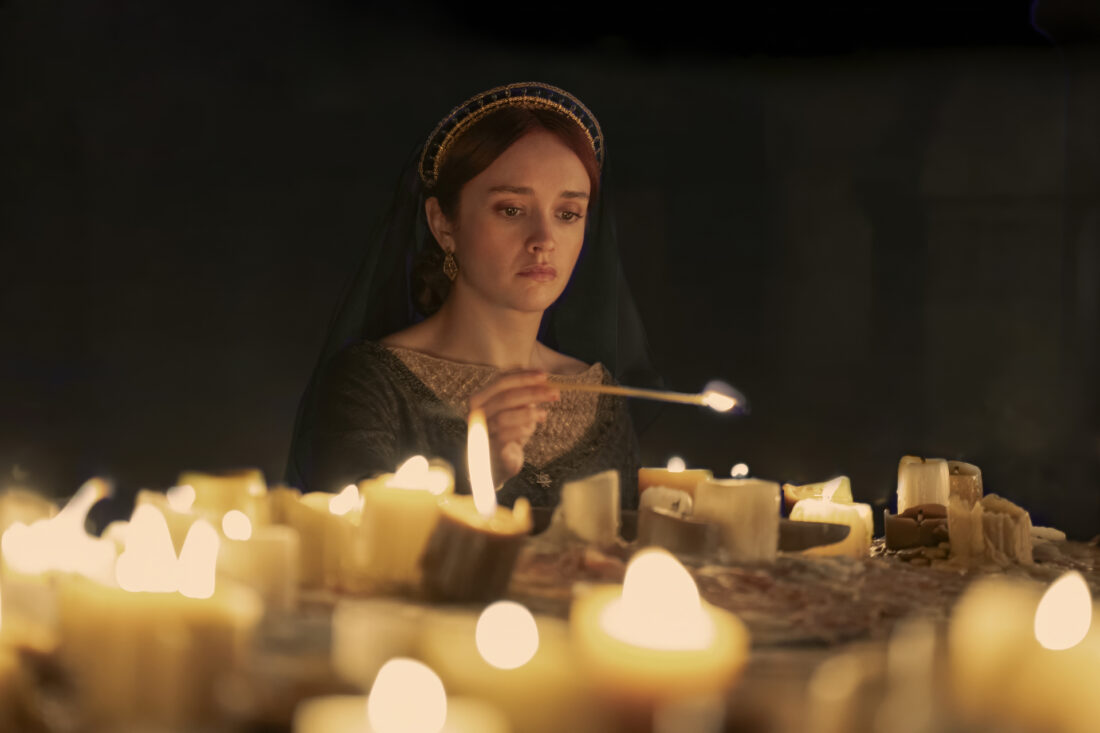
I have been a bit annoyed by the (presumably effective) advertising for this season, encouraging viewers to pick sides: #teamblack or #teamgreen. Obviously, the point of the series is that there aren’t any clean hands in this tale and that tragedy is the inevitable result of Westeros’ systems of governance, so choosing sides isn’t really a relevant issue. That said, after this first episode, I think I’d probably have to declare for Team Green. Don’t get me wrong, the Greens are a pretty wretched group—they embody Westeros’ patriarchal horror, to highlight just one aspect of the rot—and I have a pretty bad track record when it comes to picking sides in fandoms (I was Team Jacob for far too long, and solidly Team Servilia circa 2005, for those of you who watched Rome)… but I can’t turn my back on Alicent Hightower.
Alicent Hightower is the character most thoroughly rewritten in Ryan Condal’s adaptation. In Martin’s original, she is another exploration of the author’s interest in the ways that strong mothers participate in Westerosi power structures through their sons. She’s cast in the same mold as Cersei Lannister, Catelyn Stark, and Olenna Tyrell. It’s not an uninteresting idea, but it is ground we have already thoroughly covered elsewhere. In Condal’s hands, Alicent is the show’s most tragic character. Her religious conviction manifests as an extreme attachment to duty—duty to her father, to her late husband, to her children, to the realm. In this first episode, we see her chafing at the edges of it, finally seeing the ways in which the disappointing men in her life have kept her restrained. Olivia Cooke’s performance is remarkable. She imbues Alicent with such a desperate and profound anhedonia—even in the middle of an amorous liaison with her latest disappointing man, Ser Criston Cole (Fabian Frankel)—that every shot of her has a sort of magnetic grief. She turns a command to her servants to leave her to bathe in peace into a barely restrained outburst, the smallest venting of immense frustration and growing agita. The show even makes her the center of Lucerys’ lonely funeral where we cut to Alicent, miserable, trepidatious, lighting a candle for her slain step-grandson, her face bearing all the quiet sorrow of a woman who is powerless to stop the events her words set in motion. She is the best thing about a completely captivating show.
Odds and Ends
- I like that Jefferson Hall, who plays the Green Master of Coin, Tyland Lannister, gives his character the slightest bit of a Peter Dinklage cadence and tenor. Reverse engineering a highborn Westerland accent is one of many fun touches that make this show so delightful for book readers.
- As I described in my final article for season 1, Martin-as-Gyldayn offers a number of possibilities for what became of Lucerys, including that he might have survived and lived out the rest of his days as an amnesiac fisherman. The show does a great job of threading the needle of uncertainty here, having Arrax’s severed wing and Lucerys’ doublet wash ashore while his body remains undiscovered. It’s just enough closure while still remaining horrifyingly uncertain.
- It is the most minor of details and it shouldn’t bother me but Dorne doesn’t officially become a part of the Seven Kingdoms until 187 AC, fifty-eight years after the current in-show date. I am willing to believe that either the Crownlands (or, less likely, the Riverlands) are considered the current seventh kingdom, but when heralds introduce Aegon and Rhaenyra, they call them the rulers of “the Andals and the Rhoynar and the First Men.” They aren’t the rulers of the Rhoynar until Dorne is brought into the Seven Kingdoms, dagnabbit!
- Aegon II (Tom Glynn-Carney) is really fantastic. I love that the show has doubled down on the idea that huge amounts of his weakness as king come from a desperate desire to be liked. He faces constant (and fully justified) disapproval from his family and is eager to be loved by the smallfolk whose problems he thinks he can solve with money. It doesn’t hurt that his droll line delivery injects some much-needed levity into the show. “The Queen is an enduring mystery, is she not?” got a genuine laugh out of me.
In Summary
The season is off to a fantastic start. The Blood and Cheese incident is one of the darkest events in the whole of this dark chapter of Westerosi history, and it’s a bold move to begin the season with such a disturbing event. Behind the scenes, the show managed to court controversy, even during its hiatus, for using a loophole to film during the WGA and SAG strikes; it also lost one of its showrunners, GoT veteran director Miguel Sapochnik. There are huge shake-ups and changes looming in the weeks to come, but Ryan Condal and his team of writers and directors seem poised to handle the twists and turns admirably. Above all, heading into the second season, this show still has to work to live up to both audiences’ fond memories of Game of Thrones and their mostly justified skepticism over how that series ended. I fully believe that, given what this season has shown so far, House of the Dragon might end up being the better show.
What are your thoughts on this season premiere, and what moments and performances stood out to you? If you’re familiar with the source material, what did you think of the changes to the original story? Let us know in the comments, and welcome back!


